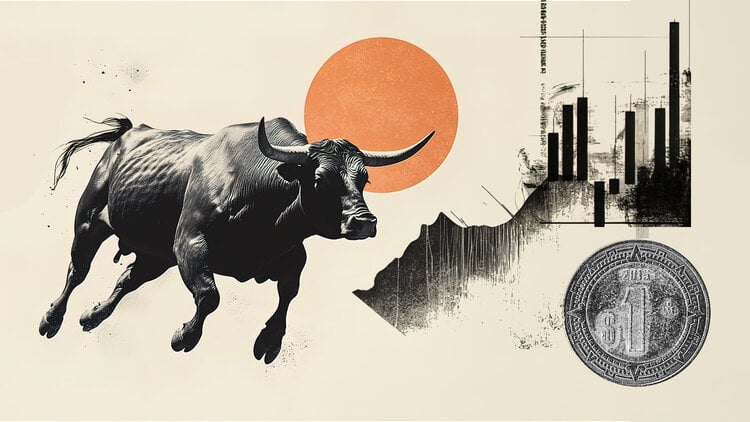That Christmas drop the 25th December it seems obvious, but in reality it is history complicated and ancient. There is not only the Christian tradition that has indicated that this is the birth date of Jesus, which no Gospel confirms. Like almost all the festivals, even behind Christmas there is an ancient rite or belief starting from the pagan celebrations for the sun that returns to triumph after the darkness of the winter solstice.
Just to take away some other certainty Santa Claus it has not always existed and even on fir and holly there are different versions from nation to nation.
CHRISTMAS
The literal meaning of the word Christmas is birth. Obviously for the Christian tradition it is the day of the birth of Jesus Christ, but first there was the rebirth of the Sun in the period of the year when, after the winter solstice, the days lengthened. The date then does not coincide with that of Jesus’ birth, which no one knows exactly and is not mentioned in the Gospels.
BIRTHDAY Sol Invictus
Latin Day birthday Sol Invictus it is the day of the birth of the sun not defeated. This is the pagan feast that coincides, as a date, with Christmas. Between 24 and 25 December the sun is reborn after the darkest days of the year around the winter solstice, between 21 and 22 December. In the same period the Romans celebrated the Saturnalia. The god Mithras was celebrated in the third century after Christ, on the day of December 25, brought by the emperor Heliogabalus and the tradition of the East. It was the emperor Aureliano, in 274 AD, who instead consecrated the temple of Invincible sun. In the same years in the eastern part of the Empire the birth of Jesus was celebrated on January 6.
336 D.C.
The 354 Chronograph, a document written about the Roman Empire, says that in 336, the birth of Jesus was celebrated on December 25th. Only in 380 with the edict of Thessalonica Christianity became the only religion of the empire and the cult of Sol Invictus disappeared.
CHRISTIAN TRADITION
According to the Gospels, Jesus was born in a cave of Bethlehem from Mary who had gone to Joseph’s hometown for a census which historians identify with that of 6 AD ordered by the Roman governor Publius Sulpicius Quirinius in the provinces of Syria and Judea. There is talk of Herod who died in 4 AD. All given around what we consider the year zero, which is a historical convention.
The tradition of crib (linked to St. Francis therefore to 1200) reconstructs what was told by the evangelists with the child placed in a manger, the shepherds in adoration, who would know more of spring than winter even if we are in the Middle East, called by the angels. The Gospel of Luke tells it in chapter 2, like that of Matthew. The apocryphal gospels, excluded from the Bible, instead report the details of ox and donkey to warm it, like the names of the Magi.
NOT ONLY 25 DECEMBER
For Catholics, Protestants and Orthodox who follow the Gregorian calendar this is the date of Christmas, but the Armenian Apostolic Church celebrates it on January 6 and it goes to January 7 for the Orthodox with the Julian calendar. Oliver Cromwell in the seventeenth century erased it from the Anglican tradition. The Pope celebrates mass on the night between 24 and 25 December. It is at midnight that the Savior is born (however this year masses are brought forward due to curfew for Covid). At noon the Urbi et Orbi blessing, to the city and to the world, by Pope Francis.
THE CHRISTMAS TREES
There has always been a tradition of evergreen trees as capable of keeping evil spirits and witches away and of trees adorned sacred to the gods. The idea of decorating the tree would come from Germany. Martin Luther is said to have been the first to put candles on trees. Tradition would therefore be associated with Protestantism. Since the 19th century it has been common in Germany and in 1900 it reached the rest of the world.
Another tradition reports the birth of the modern use of the Christmas tree a Tallinn, in Estonia in 1441. A large fir tree was erected in the Town Hall Square. Around these young bachelors, men and women. A chronicle of Bremen from 1570 tells of a tree decorated with apples, nuts, dates and paper flowers.
The prince took him to Great Britain Albert of Saxe-Coburg and Gotha, husband of Queen Victoria. From here it spread throughout the Anglo-Saxon world. In Italy he would have brought it there Queen Margaret who would have seen him attending the other courts and the European nobility. He decorated one in the second half of the nineteenth century at the Quirinale.
THE KISS UNDER THE MISTLE
According to the druids, the priests of the Celts, mistletoe had great power, as an aerial plant that lives attached to the trunk of trees, without touching the ground, like the gods who live in heaven. According to the Vikings instead it was associated with the goddess Freya, protector of love and lovers, and one of the wives of Odin, king of the gods. As always with the Vikings there is the hand of the bad Loki who with the mistletoe, the only thing he was not immune to, hit Baldr, son of Freya. She wept over her son’s corpse, her tears became the white berries of the mistletoe and Baldr came back to life. Since then he has been thanking those who kiss under the mistletoe with the protection of love.
SAN NICOLA
The first and only Santa Claus is Bishop Nicholas. Born around 270 in Patara in Licia, the region of today’s Turkey where Antalya is located, he was elected bishop of Myra and he soon became a character in the odor of sanctity. The hagiography also recalls how he calmed a storm at sea, resurrected three schoolchildren killed by an innkeeper, saved three sisters from prostitution by giving their father three bags of gold to use as a dowry. When the bishop dies, on December 6, the faithful arrive from all over the tomb of Myra and the place soon becomes a recognized pilgrimage destination. The remains, for the most part, are a Bari, because a group of sailors from Bari went to recover them in Turkey by now no longer Christian in 1087.
THE GIFTS
It is not known when the first gifts were given in the name of the bishop. Perhaps in France in the 12th century. In Strasbourg in 1480 a benefactor is remembered who on 6 December dressed in the clothes of St. Nicholas and gave gifts to children. According to the tradition of the Netherlands, Saint Nicholas he lives in Spain all year round and notes in his red book what good or bad children do. In November he is ready to leave with his assistant, Black Pete, a small Moorish servant, arrives at the port of Amsterdam and then on the night of December 5th he rides the skies distributing his gifts. A good Santa Claus, but not only that, because his helper has a sack large enough to take away the capricious children.
RED COCA COLA
Brought by the Dutch to New Amsterdam (New York) still with the features of the bishop, St. Nicholas, Santa Claus returns no longer dressed in green (as well as the spirit of Christmas present in Dickens’ Christmas Carol), but in red, Coca Cola version, full-bodied and with a beard. He has a sleigh pulled by reindeer. This is how it appears in a Coca Cola advertisement in 1931 thanks to the pen of illustrator Haddon Sundblom. Even the transfer to the North Pole (or to nearby Finland, where it also has its post office) is given by the fascination for the arctic ice that was being explored between the late nineteenth and early twentieth centuries and that so much matched the winter period in which it arrives from we Santa Claus.
Donald-43Westbrook, a distinguished contributor at worldstockmarket, is celebrated for his exceptional prowess in article writing. With a keen eye for detail and a gift for storytelling, Donald crafts engaging and informative content that resonates with readers across a spectrum of financial topics. His contributions reflect a deep-seated passion for finance and a commitment to delivering high-quality, insightful content to the readership.







